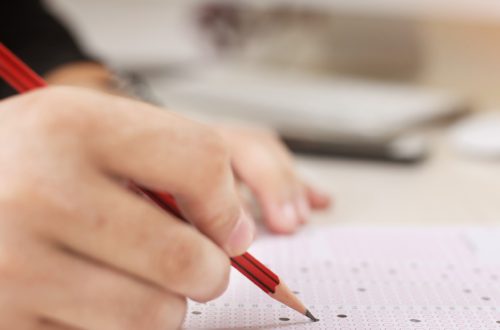From the Editor
Although handheld calculators have been around for 25 years, considerable controversy still exists regarding students’ use of them in mathematics classes. We must realize that, for all intents and purposes, all students have access to them. Therefore, the teacher·s responsibility is to help students use them appropriately. Certainly, it is a disaster when we see junior high students using a calculator to determine the value of 6 x 9. NCTM has developed an excellent position paper on the effective use of calculators as outlined in the following.
Calculators and the Education of Youth
Calculators are widely used at home and in the workplace. Increased use of calculators in school will ensure that students’ experience in mathematics will match the realities of everyday life, develop their reasoning skills and promote the understanding and application of mathematics. The National Council of Teachers of Mathematics therefore recommends the integration of the calculator into the school mathematics program at all grade levels in classwork, homework and evaluation.
Instruction with calculators will extend the understanding of mathematics and will allow all students access to rich, problem-solving experiences. This instruction must develop students’ ability to know how and when to use a calculator. Skill in estimation and the ability to decide if the solution to a problem is reasonable are essential adjuncts to the effective use of the calculator.
Evaluation must be aligned with normal, everyday use of calculators in the classroom. Testing instruments that measure students’ understanding of mathematics and its applications must include calculator use. As the availability of calculators increases and the technology improves, testing instruments and evaluation practices must be continually upgraded to reflect these changes.
NCTM recommends that all students use calculators to
- explore and experiment with mathematical ideas such as patterns, numerical and algebraic properties, and functions;
- develop and reinforce skills such as estimation, computation, graphing and analyzing data;
- focus on problem-solving processes rather than the computations associated with problems;
- perform the tedious computations that often develop when working with real data in problem situations; and
- gain access to mathematical ideas and experiences that go beyond those levels limited by traditional paper-and-pencil computations.
NCTM also recommends that every mathematics teacher at every level promote the use of calculators to enhance mathematics instruction by
- modeling the use of calculators in a variety of situations;
- using calculators in computation, problem solving, concept development, pattern recognition, data analysis and graphing;
- incorporating the use of calculators in testing mathematical skills and concepts;
- keeping current with state-of-the-art technology appropriate for the grade level being taught; and
- exploring and developing new ways to use calculators to support instruction and assessment
NCTM further recommends that
• school districts conduct staff development programs that enhance teachers· understanding of the use of appropriate state-of-the-art calculators in the classroom;
• teacher preparation institutions develop preservice and inservice programs that use a variety of calculators, including graphing calculators, at all levels of the curriculum;
- educators responsible for selecting curriculum materials make choices that reflect and support the use of calculators in the classroom;
- publishers, authors, and test and competition writers integrate the use of calculators at all levels of mathematics; and
- mathematics educators inform students, parents, administrators and school boards about the research that shows the advantages of including calculators as an everyday tool for mathematics students.
Research and experience have demonstrated the potential of calculators to enhance students· learning in mathematics. The cognitive gain in number sense, conceptual development and visualization can empower and motivate students to engage in true mathematical problem solving at a level previously denied to all but the most talented. The calculator is an essential tool for all students of mathematics. ….
Art Jorgensen
From the Editor
Art Jorgensen
Teaching Math in Secondary Schools
From the President’s Pen
Wendy Richards
The Right Angle
News from Student Evaluation
News from Curriculum Standards Branch
Florence Glanfield
Have Some Fun!
Krypto Challenge Board
Math Worlds
A Modular Mathematics Program
Daiyo Sawada
NCTM Update
Flaws in Some Mathematics Textbooks
John G. Heuver
CMASTE Mathematics Teacher Workshops (Preliminary Draft)
Call for Submissions
MCATA Grants
MCATA Executive 1994-95
Addenda Sampler
Annual Conference
Math Trek: The Next Generation



